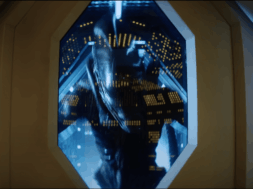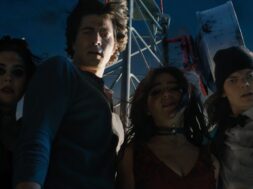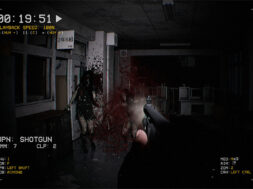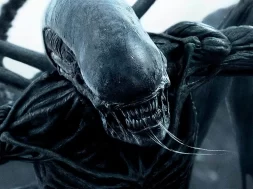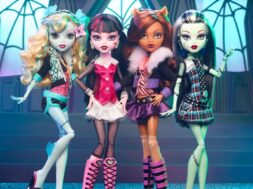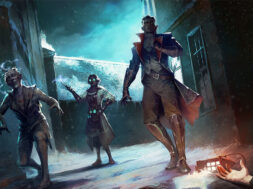Of all the haunted houses in the world of horror, few are as iconic or its story as well known as The Amityville Horror. Based on a bestselling novel of the same name by Jay Anson, the film tells the story of newlywed couple George and Kathy Lutz, and Kathy’s kids from a previous marriage, as they embark on a new life together with the purchase of a lakeside property at a bargain price. The American dream. Except, there’s something seriously wrong with the house, and it threatens to tear this family apart permanently. Thanks to the popularity of the novel and of the lead actors, The Amityville Horror became a massive success at the box office upon release on July 27, 1979, marking the birth of a long-running franchise and an enduring legacy.
Anson’s novel claims to be based on a factual account of the Lutz’s experiences with 112 Ocean Avenue, a home in the Amityville neighborhood of Long Island, New York. They moved into the home one year after Ronald DeFeo Jr. shot and killed six of his family members at the house. The Lutz family only lasted 28 days in the house before fleeing. As for DeFeo Jr., he’s currently serving six life sentences. The city denied the production the ability to film at the actual house, wanting distance from any possible negative press, so exterior shots were filmed at a private residence in New Jersey that was converted to resemble the iconic house.
James Brolin was a regular leading man when he was offered the role of George Lutz. He was hesitant to accept, partly because there was no finished script to read and also because he worried that the haunted house movie would be too hokey. So, he was urged to read the novel. Brolin became so engrossed when he started the book that he continued reading well into the late hours of the night, punctuated by a pair of his hung pants falling abruptly during a particularly scary moment in the book. He took that as a sign to accept the part. He proved too effective as the possessed George, though, that he struggled to find roles for a period after the film’s release.
As for Margot Kidder, who played Kathy Lutz, she’d already proven her horror mettle in Black Christmas and Brian De Palma’s Sisters. But she was fresh off her breakthrough turn as plucky reporter Lois Lane in Superman when this role came her way. In other words, both Brolin and Kidder were box office draws at the time.

Directed by Stuart Rosenberg (Cool Hand Luke, Voyage of the Damned), and penned by Sandor Stern (Pin), The Amityville Horror contained a wealth of memorable moments beyond the iconic “evil eyes” of the house’s exterior. The flies, the menacing voice booming “GET OUT!” at Father Delaney (Rod Steiger) when he comes to bless the home, the glowing red eyes of Jody the pig, the nightmares at 3:15am, the poor babysitter’s trauma, and that walled-up room in the basement that hid the passage to hell all made for an unforgettable entry in haunted house terror.
But it was the relatability of the Lutz’s financial situation that resonated the most. They put everything they had into this house. When George and Kathy discuss whether they can afford the home, no matter its cheap price tag, it’s easy to put ourselves in their shoes. When Kathy’s brother can’t find the money he stashed away for the caterer on the night of his engagement party, George offers to write a check until the cash turns up. It’s a gesture that elicits serious dread because we know George can’t afford it; and the money never does resurface. It’s not just the evils of the house getting to him, but the financial pressures of keeping the family afloat.
Finally, you can’t talk about The Amityville Horror without mentioning the Academy Award nominated score by Lalo Schifrin. The eerie choir vocals, the shrieking strings and the frenzied notes all orchestrate a chilling score that perfectly captures a haunting presence. Or a house of pure evil. It was a sort of redemption for Schifrin, whose previous score for The Exorcist had been thrown out by William Friedkin.
With a larger than life backstory, a popular novel, two compelling lead actors, a goosebump-inducing score, and no shortage of memorable movie moments set in an iconic haunted house, it’s easy to see why The Amityville Horror became the second highest grossing movie of 1979. Or why 22 additional Amityville films have been made since, including the 2005 remake. Early in the film, Kathy asks George if it bothered him to know that a family died in that house. He responded, “Well, sure, but houses don’t have memories.”
He didn’t know at the time that this one does. Forty years’ worth.





